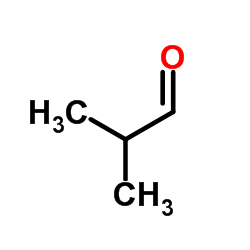(R)-Humulone

(R)-Humulone structure
|
Common Name | (R)-Humulone | ||
|---|---|---|---|---|
| CAS Number | 26472-41-3 | Molecular Weight | 362.460 | |
| Density | 1.2±0.1 g/cm3 | Boiling Point | 571.4±50.0 °C at 760 mmHg | |
| Molecular Formula | C21H30O5 | Melting Point | 65-66.5℃ | |
| MSDS | N/A | Flash Point | 313.4±26.6 °C | |
Use of (R)-HumuloneHumulone (α-Lupulic acid), a prenylated phloroglucinol derivative, is a potent cyclooxygenase-2 (COX-2) inhibitor. Humulone acts as a positive modulator of GABAA receptor at low micromolar concentrations. Humulone is an inhibitor of bone resorption. Humulone possesses antioxidant, anti-angiogenic and apoptosis-inducing properties[1][2][3]. |
| Name | (6S)-3,5,6-trihydroxy-2-(3-methylbutanoyl)-4,6-bis(3-methylbut-2-enyl)cyclohexa-2,4-dien-1-one |
|---|---|
| Synonym | More Synonyms |
| Description | Humulone (α-Lupulic acid), a prenylated phloroglucinol derivative, is a potent cyclooxygenase-2 (COX-2) inhibitor. Humulone acts as a positive modulator of GABAA receptor at low micromolar concentrations. Humulone is an inhibitor of bone resorption. Humulone possesses antioxidant, anti-angiogenic and apoptosis-inducing properties[1][2][3]. |
|---|---|
| Related Catalog | |
| Target |
COX-2 |
| In Vitro | Humulone (0.1, 1, 10, 100, 1000, 10000 nM; for 12 h) with with 10 ng/ml TNFα dose-dependently decreases the amount of released PGE2 with an IC50 of about 30 nM in MC3T3-E1 cells. Humulone reduces cyclooxygenase activity of the TNFK-treated cells[1]. Humulone (0.1-10000 nM; for 12 h) suppresses the TNFα-induced increase of cyclooxygenase-2 mRNA[1]. Humulone hardly affects the cyclooxygenase-1 activity below 10 μM, whereas inhibits the cyclooxygenase-2 activity with an IC50 of about 1.6 μM in MC3T3-E1 cells[1]. |
| In Vivo | Humulone (10 or 20 mg/kg; IP; single dose) shortens sleep onset and increases the duration of sleep induced by pentobarbital and decreases the spontaneous locomotion in open field at 20 mg/kg[2]. Humulone (10 μmol; applied topically to the dorsal shaved area) pre-treatment significantly inhibited TPA (10 nmol)-induced COX-2 expression in Female ICR mice (6-7 weeks of age) skin[3]. Humulone (1, 10 μmol; applied topical; pre-treatment 30 min) suppresses TPA-induced NF-κB DNA binding. Humulone attenuates TPA-stimulated nuclear translocation of p65 and p50 subunit proteins of NF-κB[3]. Animal Model: Male BALB/cAnNRj mice (9-11 weeks of age)[2] Dosage: 10 or 20 mg/kg Administration: IP; pre-treatment before sodium pentobarbital (35 mg/kg; i.p.) and ethanol (3.5 g/kg) Result: Significantly decreased the latency and prolonged the duration of sleep induced by pentobarbital at 20 mg/kg dose. These effects were not observed at a lower dose of 10 mg/kg. Showed no effect on the onset of sleep induced by ethanol, but significantly increased sleep duration dose-dependently. |
| References |
| Density | 1.2±0.1 g/cm3 |
|---|---|
| Boiling Point | 571.4±50.0 °C at 760 mmHg |
| Melting Point | 65-66.5℃ |
| Molecular Formula | C21H30O5 |
| Molecular Weight | 362.460 |
| Flash Point | 313.4±26.6 °C |
| Exact Mass | 362.209320 |
| PSA | 94.83000 |
| LogP | 5.14 |
| Vapour Pressure | 0.0±3.6 mmHg at 25°C |
| Index of Refraction | 1.558 |
| Hazard Codes | Xi |
|---|---|
| WGK Germany | 3 |
|
~% 
(R)-Humulone CAS#:26472-41-3 |
| Literature: Carroll, Brian J.; Darland, Gary; Desai, Anuradha; Konda, Veera; Dahlberg, Clinton J.; Urban, Jan Patent: US2012/108671 A1, 2012 ; Location in patent: Page/Page column 18 ; |
|
~% 
(R)-Humulone CAS#:26472-41-3 |
| Literature: Carroll, Brian J.; Darland, Gary; Desai, Anuradha; Konda, Veera; Dahlberg, Clinton J.; Urban, Jan Patent: US2012/108671 A1, 2012 ; |
| a-Bitter Acid |
| (R)-3,5,6-Trihydroxy-2-isovaleryl-4,6-bis-(3-methyl-but-2-enyl)-cyclohexa-2,4-dienon |
| 2,4-Cyclohexadien-1-one, 3,5,6-trihydroxy-2-isovaleryl-4,6-bis(3-methyl-2-butenyl)-, (R)-(-)- |
| 3,5,6β-Trihydroxy-2-isovaleryl-4,6α-bis(3-methyl-2-butenyl)-2,4-cyclohexadienon |
| Humulon |
| (6R)-3,5,6-trihydroxy-2-isovaleryl-4,6-bis(3-methylbut-2-enyl)cyclohexa-2,4-dienone |
| a-Lupulic Acid |
| 2,4-Cyclohexadien-1-one, 3,5,6-trihydroxy-4,6-bis(3-methyl-2-buten-1-yl)-2-(3-methyl-1-oxobutyl)-, (6R)- |
| 2,4-Cyclohexadien-1-one, 3,5,6-trihydroxy-4,6-bis(3-methyl-2-butenyl)-2-(3-methyl-1-oxobutyl)-, (R)- |
| (R)-2.3.6-Trihydroxy-1.3-bis-(3-methyl-buten-(2)-yl)-5-isovaleryl-cyclohexadien-(1.5)-on-(4) |
| α-Lupulic acid |
| (R)-3,5,6-trihydroxy-2-isovaleryl-4,6-bis-(3-methyl-but-2-enyl)-cyclohexa-2,4-dienone |
| (6R)-3,5,6-Trihydroxy-2-(3-methylbutanoyl)-4,6-bis(3-methyl-2-buten-1-yl)-2,4-cyclohexadien-1-one |
| Humulone,mixture of homologues |
| |A-Lupulic acid |
| 2',3'-Dihydro-3'β,4',6'-trihydroxy-3'α,5'-bis(3-methyl-2-butenyl)-2'-oxoisovalerophenon |
| (R)-3,5,6-Trihydroxy-4,6-bis(3-methyl-2-butenyl)-2-(3-methyl-1-oxobutyl)-2,4-cyclohexadien-1-one |
| (6R)-3,5,6-Trihydroxy-2-(3-methylbutanoyl)-4,6-bis(3-methylbut-2-en-1-yl)cyclohexa-2,4-dien-1-one |
| |A-Bitter acid |
| Humulone |
| humulone, (R)- |
| α-Bitter acid |

![3-methyl-1-[2,4,6-trihydroxy-3,5-bis(3-methylbut-2-enyl)phenyl]butan-1-one structure](https://image.chemsrc.com/caspic/046/4374-93-0.png)
 CAS#:504-85-8
CAS#:504-85-8 CAS#:78-84-2
CAS#:78-84-2 CAS#:67-64-1
CAS#:67-64-1 CAS#:78-78-4
CAS#:78-78-4
